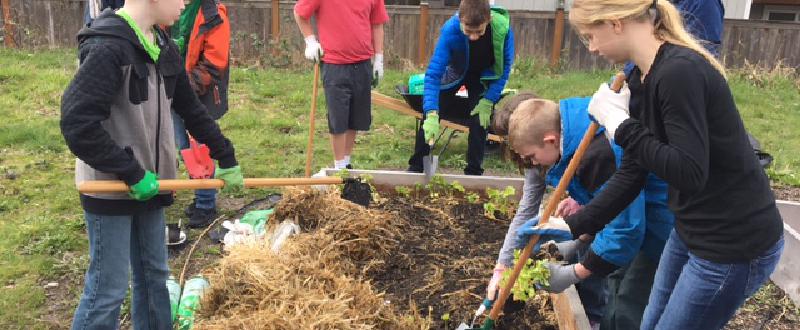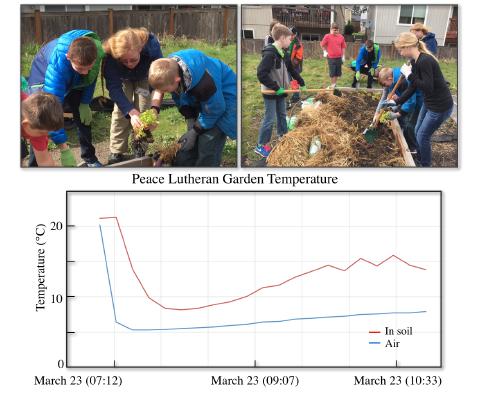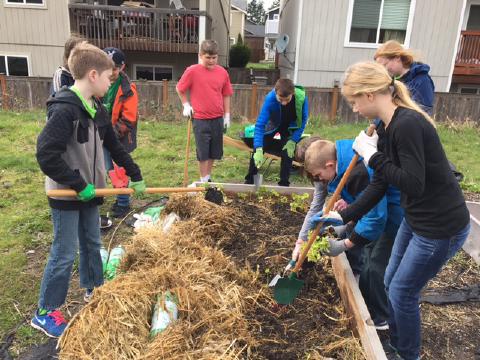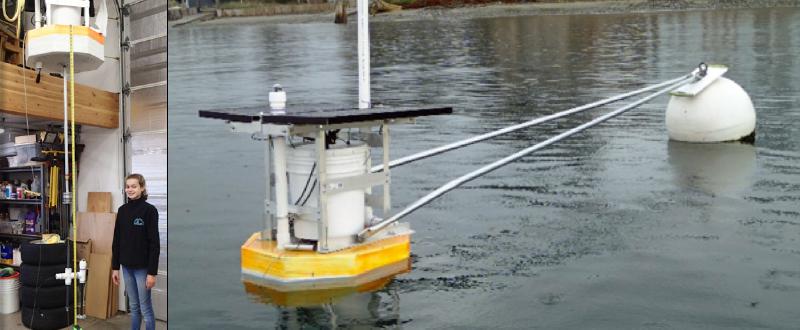Peace Lutheran School

"...after much debate, one of the students remarked that the soil would be the warmer temperature because the previous day had been sunny, and the ground would have held in the heat"
Sheri Juszczak is a teacher at Peace Lutheran School located in East Bremerton and she is a participant in the Olympic STEM Pathways Partnership effort. Sheri contributed this story on using the SeaState sensors for student evaluation focusing on the optimal soil conditions to grow a garden.
"We are a small school with a student body of 208 (preschool through 8th grade). We are not within walking distance to a body of water (other than the retention pond behind the school), so I decided to deploy my temperature sensor for a different purpose. In the interest of teaching children how to grow food, I decided to ask for permission to begin a school garden.
Our garden has begun in a small way. Two 4’x8’ raised beds were built on the west side of the school property. We planted only one bed last spring. I enlisted the help of a school parent who has an incredible amount of knowledge regarding plants and organic gardening. She graciously volunteers to come into the school once a week to educate the students, plant seeds in the winter indoors, and get the students to do the actual planting outdoors. All students in the school are participating. (She visits a different class each week.)
One of the resources shared with me by another OSPP teacher contained a chart listing the optimum soil temperatures for various types of plants. I shared this with my class and with my volunteer parent. We then put the sensor in the soil for three hours. The sensor was set to take readings every 10 minutes.
When I presented the sensor data to the class, I asked them which line they thought was the air temperature, and which line was the soil temperature? It was fun to listen to their answers and explanations. Finally, after much debate, one of the students remarked that the soil would be the warmer temperature because the previous day had been sunny, and the ground would have held in the heat.
The students now want to take an overnight reading to see how much heat is lost overnight. We will deploy the sensor before the end of the school day and then retrieve it at the start of science class the following day. Together we will analyze the data and see if the soil is continually warm enough to sustain the plants, or if it still gets too cold at night.
One last thing – because we run a childcare on site year-round, my parent volunteer also comes in weekly during the summer and takes children from the childcare down to the garden to work and to learn!"





